Bilbao: A Journey Through Steel, Soul, and Pintxos
An American’s first encounter with the beating heart of the Basque Country
21 ESCAPESSPAIN
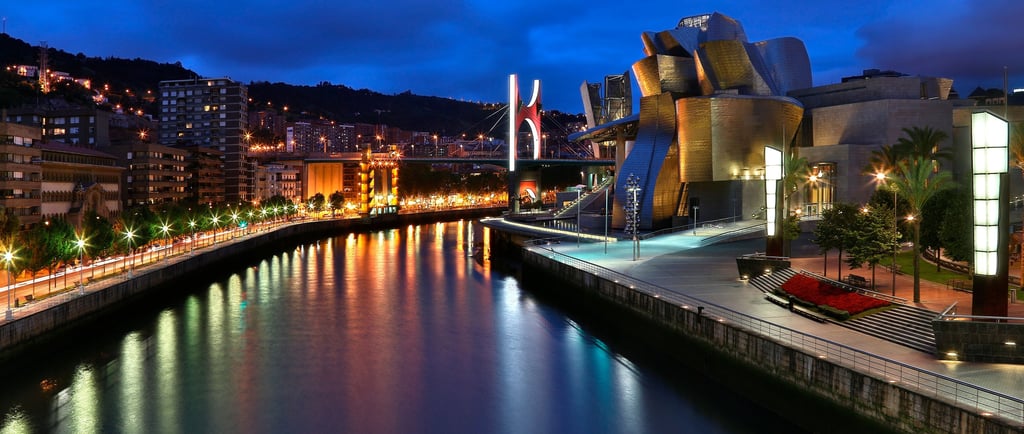

I arrived in Bilbao on a late September afternoon, the kind of day where the clouds threaten rain but never follow through. From the plane window, the green hills looked more like Ireland than what I’d expected of Spain. And the moment I stepped out of the terminal, the cool breeze told me I had landed in a different kind of Spain—one that whispered in Euskera and carried the scent of salted cod and wood smoke.
I was here to visit my old friend Aitor, a Bilbao native I hadn’t seen in years. We’d planned three days, no schedule, just him showing me the city his way. He picked me up in a small hybrid, coffee already waiting in the cupholder. “You’re not in Madrid, and you’re not in Barcelona,” he said right off the bat. “Bilbao is its own thing. We’ll take it one bite at a time.”
What I didn’t expect was how green everything looked. Rolling hills surrounded the airport, and a quick 15-minute drive into the center showed me a city that was alive, not just in movement, but in identity.
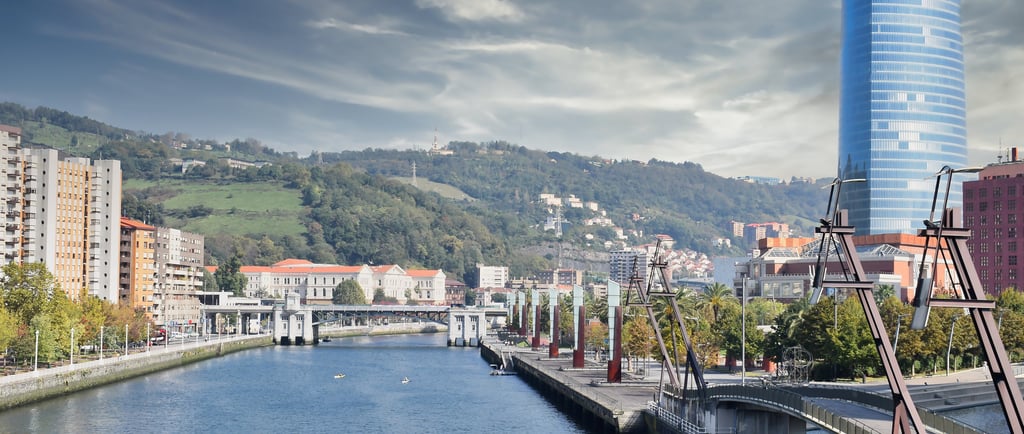

As we drove into the city from the airport, Aitor pointed out how much Bilbao had changed over the last few decades. “You wouldn’t have wanted to visit in the ’80s,” he said bluntly. Back then, Bilbao was a gritty industrial city built on shipbuilding, steel, and mining. The river we followed—now clean and lined with parks—was once heavily polluted. But the city reinvented itself in the 1990s, kicking off an ambitious urban renewal plan known as the “Bilbao Effect,” centered around the construction of the Guggenheim Museum. It worked. Today, Bilbao is a smart mix of industry, design, and tradition. We pulled up to our hotel, the Hotel Meliá Bilbao, just steps from the river and a short walk to the Guggenheim. Its sleek, modern design pays tribute to sculptor Eduardo Chillida, and the rooms are spacious, quiet, and perfectly placed for exploring. A quick check-in, a shower to shake off the flight, and we were ready to hit the streets.
The Guggenheim Experience
We started with a walk straight to the city’s centerpiece: the Guggenheim Museum. Even if you’ve seen photos, nothing really prepares you for how it dominates the landscape. Designed by Frank Gehry and opened in 1997, the structure itself is a work of art—curving metal sheets that look like they’re in motion, catching and distorting the light from the river. Aitor explained how it symbolized the city’s rebirth from a polluted industrial port into a cultural destination. Around it, public art pieces make it feel like a living gallery: Jeff Koons’ massive floral Puppy stands guard at the entrance while Louise Bourgeois’ enormous spider Maman creeps nearby. Inside, it’s packed with rotating exhibitions, large-scale installations like Serra’s The Matter of Time, and a rooftop view worth checking out. Even if modern art isn’t your thing, the building itself is a must-see.
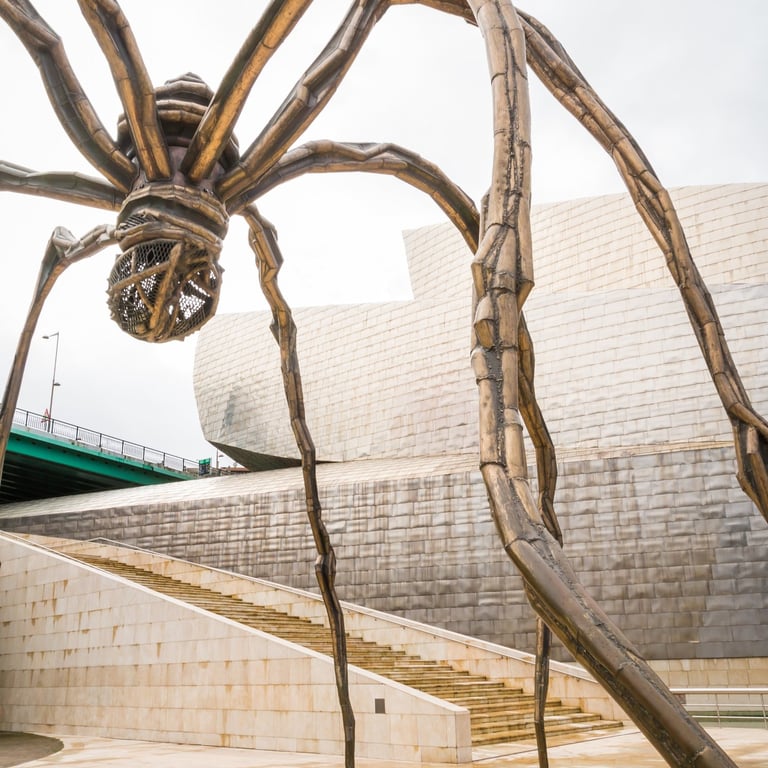

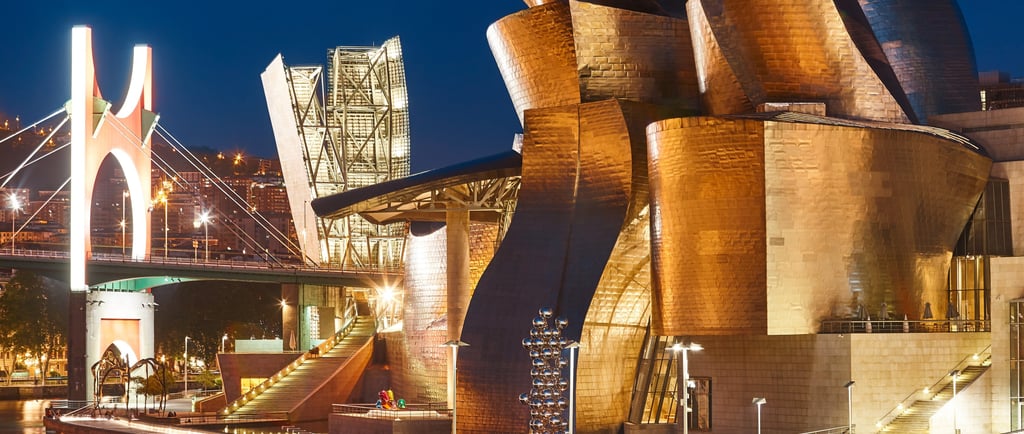

From there, we followed the river on foot toward the city’s oldest neighborhood: Casco Viejo. The contrast was immediate. Glass and steel gave way to stone and tile. Narrow, winding streets, colorful balconies, and the sounds of daily life filled the air—street musicians, chatter from cafés, the distant clink of pintxo glasses. This is where Bilbao was born, and where, as Aitor put it, “you can still feel the original heartbeat of the city.”
Aitor pointed out the Siete Calles, or Seven Streets, where the city was founded. We visited the Cathedral of Santiago, a Gothic-style church dating back to the 14th century and an important stop on the Camino de Santiago.
Nearby, we explored the Basque Museum for some background on the region’s unique history, and the Arkeologi Museoa, focused on local archeology and the pre-Roman roots of the Basque people. For something more contemporary, we stopped at the Azkuna Zentroa, formerly a wine warehouse, now an impressive cultural center redesigned by Philippe Starck, featuring galleries, cinemas, a rooftop pool, and a library.
We wandered Casco Viejo until the lights came on, casting golden glows across the cobbled streets. We passed by Plaza Nueva, already buzzing with locals enjoying their early evening vermouths and pintxos. Aitor promised we’d come back the next night for a proper crawl. But after a long travel day and a full afternoon of walking, we both agreed—an early dinner, a glass of wine, and a good night’s rest were the right move.
Back at the Hotel Meliá, I sank into the bed and listened to the quiet hum of the city outside. No horns. No chaos. Just the occasional tram in the distance and the promise of another day ahead.
The next morning, we jumped right into it. Every meal in Bilbao is a small discovery. We kicked things off at La Ribera Market, one of the largest covered markets in Europe and a true hub of daily life in the city. The building itself—an early 20th-century beauty with stained glass and wrought-iron detailing—sits right by the river like a proud local institution. Inside, the layout is neat and organized: seafood stalls overflowing with gleaming sardines and squid, cured meats and jamón hanging from hooks, cheeses stacked like edible sculptures, and vibrant produce that looked like it had just been pulled from the garden.
Upstairs, we grabbed two stools at a bar overlooking the lower level. Aitor ordered for both of us: bacalao al pil-pil, a classic Basque cod dish in an emulsion of garlic and olive oil; txipirones en su tinta, squid cooked in its own ink; and marmitako, a rich tuna and potato stew originally made by fishermen. The flavors were bold and earthy, completely unlike anything I’d had in other parts of Spain. “This is grandma-level food,” Aitor said, “but made by people who trained at culinary schools.” He wasn’t wrong.
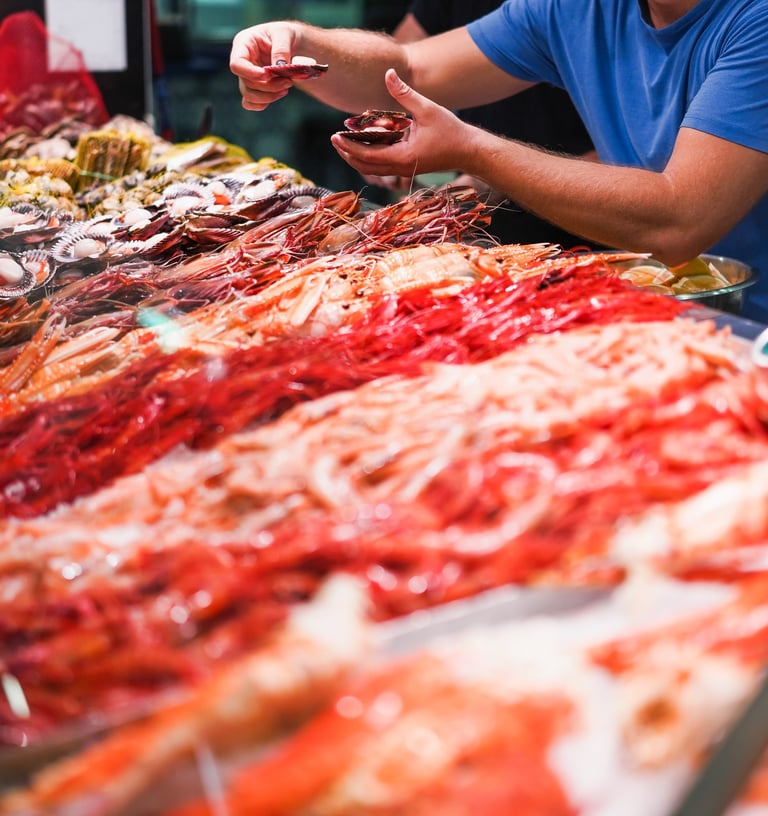

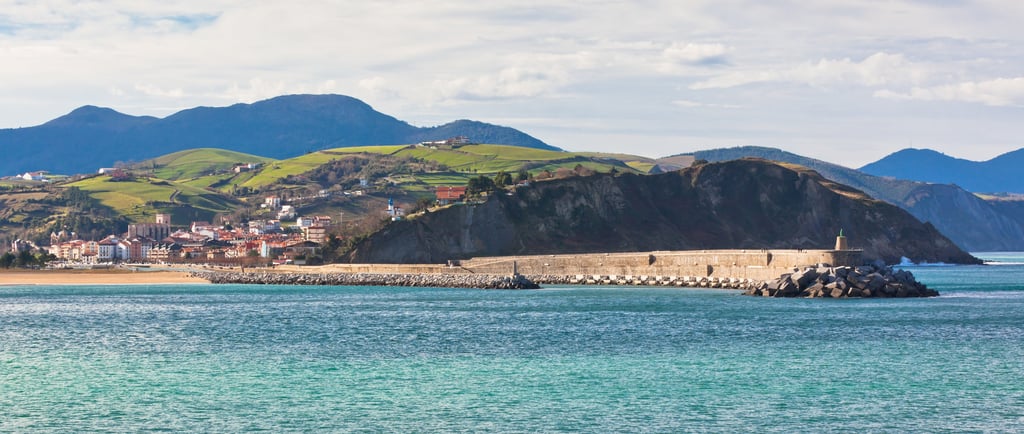

In the afternoon, we took a slow walk to the Artxanda Funicular, a short ride that pulled us up the hillside to one of the best views of Bilbao. From the top, the city stretched in every direction—red rooftops, bridges spanning the Nervión River, the shimmering shell of the Guggenheim, and the green hills beyond. You could see the transformation Aitor had talked about: the once-industrial port city that found new life without forgetting its past. It was all there, in one quiet, sweeping view.
That night, we hopped from pintxos bar to pintxos bar around Plaza Nueva, Bilbao’s go-to spot for casual eats and drinks. Pintxos aren’t just bar snacks; they’re a culinary art form. I tried seared foie gras on brioche, grilled prawns with garlic sauce, creamy cod brandade, and mini beef cheeks slow-cooked to perfection. We drank txakoli, a slightly fizzy white wine, always poured from height, and later switched to rioja alavesa, the local red that goes with nearly everything.
Aitor insisted we try a few institutions:
Café Iruña – an elegant café from 1903, famous for its Moorish tiles and lamb skewers grilled in front of you.
El Globo – packed, loud, and full of locals. Try their crab pintxo and croquetas.
Gure Toki – modern pintxos with a creative edge; the egg yolk in tempura blew my mind.
For a proper sit-down meal, book a table at Zortziko, a Michelin-starred restaurant where traditional Basque cooking meets fine dining. If you’re into tasting menus, this one is refined but still deeply rooted in local flavor. Aitor also mentioned Nerua, inside the Guggenheim, for a more experimental approach.
By midday, it was time for something Aitor had talked about since I landed—San Mamés Stadium. We didn’t have match tickets (it was an away game weekend), but we toured the stadium anyway. The place is stunning—sleek, bright, and filled with red-and-white pride. For locals, Athletic Club de Bilbao isn’t just a team—it’s part of the city’s identity. The club has a self-imposed rule: only Basque players, or those trained locally, can wear the jersey. That commitment makes every goal, every win, feel personal.
There’s a small museum inside where you can learn the full story of the club, its legacy, and its role in regional culture. But what really hit me was the mural outside, filled with names and faces—fans, players, families—an ever-growing tribute to a team that feels more like a movement.
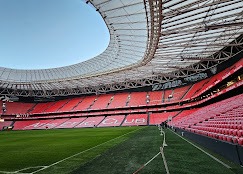

We ended the afternoon with something truly special: a visit to a txoko. Txokos are private Basque gastronomic societies, often hidden in basements, side streets, or old buildings. They’re not restaurants. They’re not open to the public. But if you’re invited, it’s an honor—and a peek into one of the most cherished parts of Basque tradition.
Aitor’s cousin was a member of one tucked away near the Bilbao La Vieja district. From the outside, you wouldn’t notice it—just a small wooden door. Inside, though, it opened into a warm, tiled kitchen with a long table already half-filled with regulars. The rules were simple: no politics, no phones, no showing off—just cooking, sharing, and eating.
We grilled besugo (sea bream), cooked up a pot of menestra de verduras (a hearty vegetable stew), and served local cider straight from the bottle, pouring it from a height like the pros. I didn’t understand most of the conversations happening around me, but I didn’t need to. The food, the laughter, the way everyone moved around each other—that was the language. By the time dessert came—a rustic pantxineta pastry filled with custard and toasted almonds—I realized I hadn’t checked my phone in hours.
That evening, we walked back along the Nervión River, city lights dancing on the water, the air crisp and calm. No sightseeing. No checklist. Just the kind of Sunday that reminds you why people fall in love with a place.
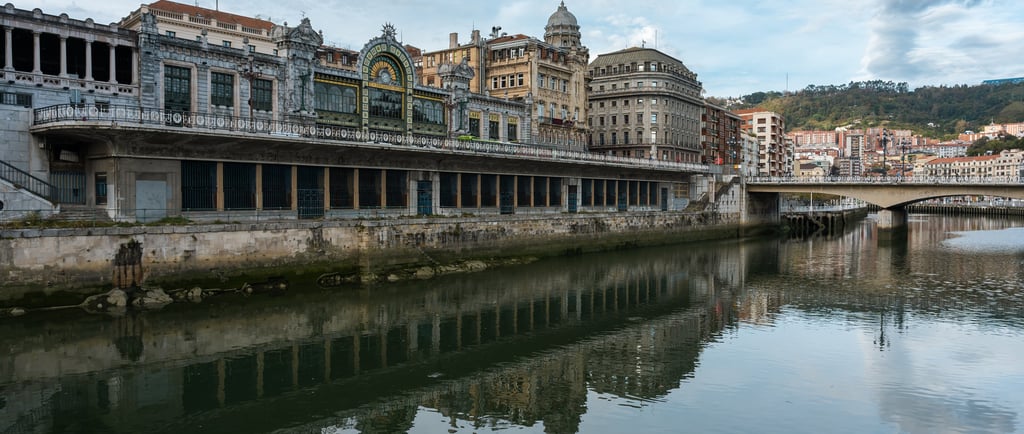

Our last morning in Bilbao felt different—not because anything dramatic changed, but because I had. The city, once just a dot on my travel map, had started to feel familiar. Comfortable. Real.
Aitor had one last walk planned for us through Bilbao La Vieja, the district across the river from Casco Viejo. Years ago, it was seen as rough around the edges. Today, it’s one of the most creative and culturally evolving parts of the city, full of artist studios, indie bookstores, cafés with mismatched furniture, and murals splashed across old factory walls. It’s where Bilbao shows its younger, edgier side.
We stopped for coffee at Tívoli Café, then wandered toward Azkuna Zentroa one more time. It’s easy to miss the details here—like the 43 uniquely designed columns on the ground floor, each representing a different architectural style from around the world. There’s a rooftop pool with a glass floor and an art-house cinema. But what struck me was how the city took an old wine warehouse and turned it into a space that invites everyone in. That’s Bilbao in a nutshell: renewal with purpose.
We had one final lunch at El Perro Chico, a modern spot tucked into a quiet corner of the riverside. Local ingredients, playful presentations, a glass of white wine from Getaria. Simple, clean, unforgettable. Then, it was time to pack. Aitor gave me a firm handshake, then pulled me into a hug. “You came at the right time,” he said. “No festival, no rush, just Bilbao as it is.” And he was right. I left with the feeling that I had seen the city not through a guidebook, but through the eyes of someone who lives it every day.
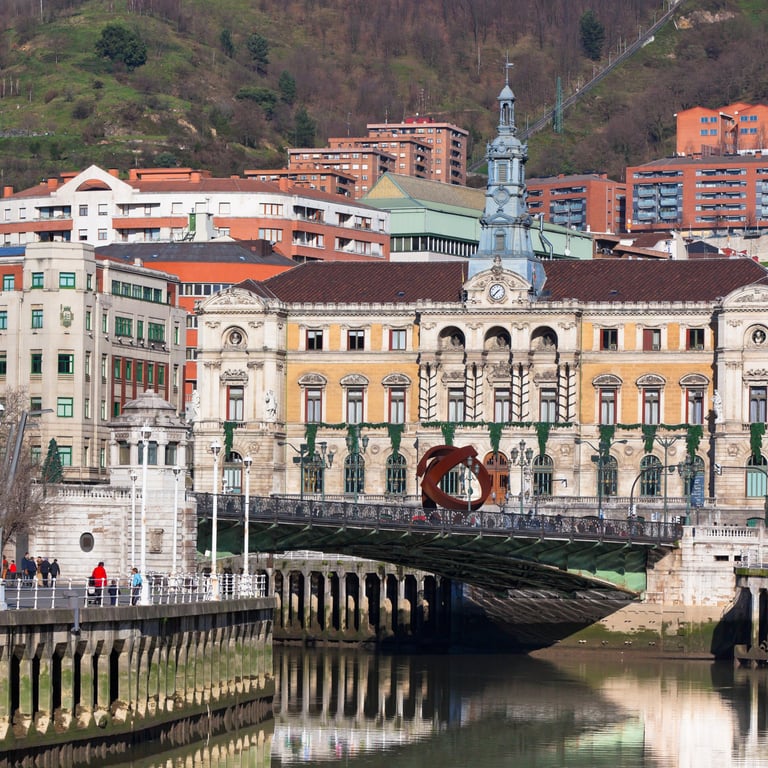

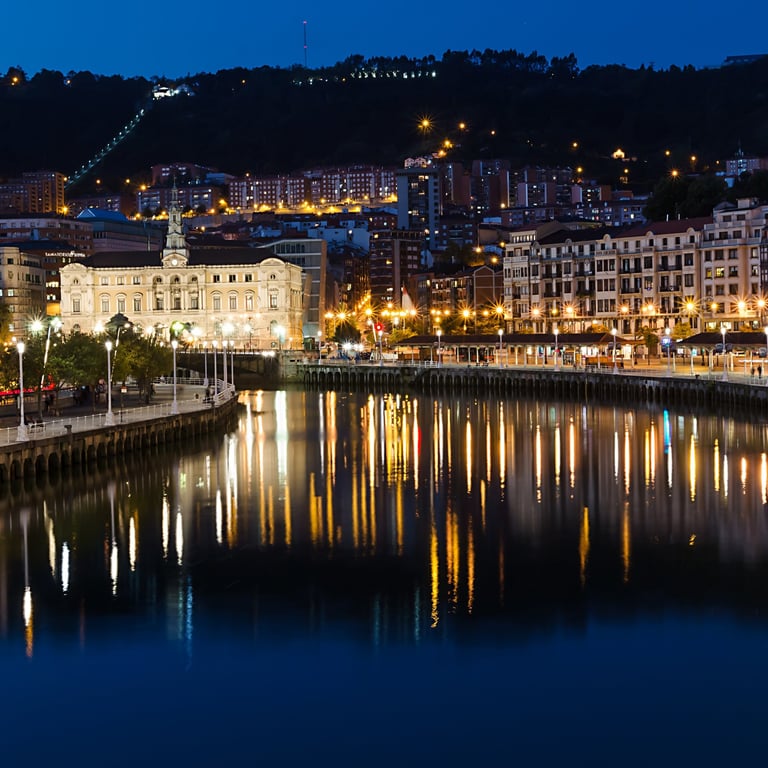

Insider Tips for First-Time Visitors
When to go: Spring (May–June) and early fall (September–October) are ideal. Mild weather, fewer tourists, and festivals without the crowds.
How to get around: Walk as much as you can—Bilbao is compact and walkable. The metro is clean, efficient, and designed by Norman Foster. Buses and trams also make getting around easy.
Language: Spanish is widely spoken, but you’ll see and hear Basque (Euskera) everywhere. Locals appreciate a few words like eskerrik asko (thank you).
What to wear: Layer up. Even in summer, evenings can be cool. Always carry a light jacket or scarf.
Cultural norms: Dinner starts late—most restaurants don’t open before 8:30 PM. Pintxos are casual and don’t require reservations, but high-end spots do.
Recommended One-Day Trips from Bilbao
If you have more time, these are easy and enriching day trips you can take from the city, all within 30–90 minutes:
San Juan de Gaztelugatxe
A dramatic hermitage perched on a rocky island connected by a zigzagging stone bridge. Famous from Game of Thrones, but the real-life view is even better. Go early to avoid crowds.Getxo & Portugalete
Take the metro and spend a day walking the elegant seaside promenade in Getxo, then cross the Vizcaya Bridge, a 19th-century transporter bridge and UNESCO World Heritage Site, to Portugalete.Gernika (Guernica)
Known worldwide because of Picasso’s painting, the town offers a quiet reflection on war, peace, and Basque identity. Visit the Peace Museum and the ancient oak tree where the region’s political assemblies took place.Mundaka & Bermeo
Perfect for coastal views, surfing culture, and fresh seafood. Mundaka is beloved by surfers for its world-class left-hand wave, and Bermeo offers a colorful harbor and traditional charm.Lekeitio
A lesser-known gem with a beautiful beach, a Gothic basilica, and a small-town vibe that feels untouched by time.Vitoria-Gasteiz
The capital of the Basque Country, filled with medieval architecture, green parks, and one of Spain’s best-preserved old towns. Excellent gastronomy and fewer tourists make this an underrated favorite.
Bilbao doesn’t shout. It doesn’t need to. It’s a city that works, evolves, eats well, and stays true to itself. Whether you come for the architecture, the food, or just to see something different from the usual Spanish circuit, what you find here will stick with you.
Crunia Travel
Customized travel experiences await you.
Get in touch
hello@cruniatravel.com
+1 754 457 2624
© 2025. All rights reserved.


admin@cruniallc.com
